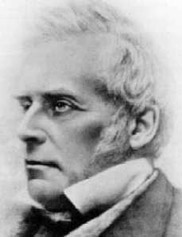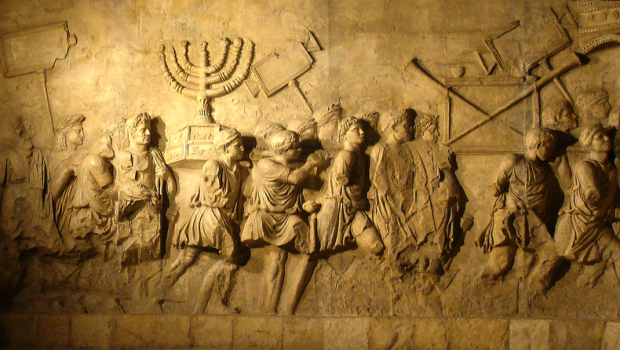Holy Week: Jesus’ Final Teaching
Author’s note: The views expressed in this article are those of the author only and do not necessarily express the views of all the members of WV4G.
On Tuesday of Holy Week, Jesus engaged in his final set of public teachings during his ministry that is recorded in the Gospel accounts. Even after the chaotic scene he caused the day prior, Jesus returned to the Temple. While there, the chief priests, Sadducees, set out to trap him. His antics were effecting their power and their bottom line, so something had to be done. Their plan was to trick him with impossible to answer questions so that he would unintentionally incriminate himself. Once he did, they could publicly arrest him and could give his answers as evidence to the undoubtedly unruly the crowds. But Jesus continually got the better of them. Initially, he trapped them with a question about John the Baptist (Matt. 21:23-27). Some Pharisees who sympathized with the Sadducees attempted the same thing with a question about taxes (Matt. 22:15-22) which they probably believed to be particularly precarious given Jesus’ seeming anti-Roman establishment zealot-like tendencies coupled with the fact that he came from Zealot territory in Galilee. Yet Jesus answered with ease.

CLICK TO ENLARGE: The inner courts is most likely where Jesus met and debated with the Sadducees and Pharisees. It could possibly have been at the stairs on left.
The Sadducees came back with another seemingly perplexing question about marriage and the resurrection (Matt. 22:23-33), and Jesus gave his best response yet, not necessarily because of what he said, but because of what he cites as evidence. In defending the resurrection from the dead, Jesus knew that when it came to the Scriptures the Sadducees did not accept anything other than the Torah. No Psalms. No Prophets. No oral tradition. In their mind, if it was good enough for Moses, it was good enough for them. So, when refuting them, Jesus quoted from their own authority (Exodus 3:6) when God first introduced himself to Moses. He then accused the Sadducees of not knowing their own text. Afterward, the Pharisees came and asked him about the Greatest Commandment and the identity of the Messiah (Matt. 22:34-45). Jesus’ gave deeply Biblical answer after deeply Biblical answer.
After all these questions, Jesus began decrying the hypocrisy of the Pharisees. While what Jesus said certainly was true, I believe this text has been unfairly used to condemn all Pharisees. As a result, Pharisees have been largely misunderstood. As I’ve mentioned in previous posts, the Pharisees were the descendants of the hasidim and were considered the exemplary model of righteousness and following the Law in Jesus’ day. Because they believed disobedience had caused their forefathers to be exiled, their desire was to ensure obedience among the people of God so that would never happen again.
Modern Jewish man with phylacteries on his head and hand, taking literally God’s command in Deut. 6:8
After their split with the Zealots, they quickly grew to be the largest religious sect during the time of Jesus and were the most respected religious members of their society. They were looked up to and emulated by those in their communities. In the context of Matthew 23, it seems that Jesus is leveling this accusations at the Pharisees within earshot who are somehow allied with the Sadducees. It’s evident that Jesus didn’t disagree with all of the Pharisees or their teachings (Matt. 23:1-3) and some (I would argue most) didn’t have any issue with what Jesus was teaching (Luke 13:31). We even see post-conversion Paul calling himself a Pharisee in the present tense (Acts 23:6). I believe the Gospel writers recorded Jesus’ condemnation of and negative interactions with the Pharisees because of their unusual nature. We shouldn’t assume that all Pharisees were hypocrites. However, we can’t discount or ignore Jesus strong words for those deviating from traditional Pharisaic teaching. (The same type of condemnation of hypocritical Pharisees can be found within the Talmudic literature as well. See here).
Once he concluded, Jesus and his disciples left the Temple Mount. As they left and were climbing the Mount of Olives, the disciples began discussing the Temple. That transitions us to what is commonly called the Olivet Discourse. This discourse is two chapters of Jesus prophesying about destruction. This teaching begins with Jesus’ statement about the Temple and we would do well to remember this is where it begins. “You see all these, do you not? Truly, I say to you, there will not be left here one stone upon another that will not be thrown down,” (Matt. 24:2). The rest of the teaching should be understood as flowing from this statement because what comes naturally are questions from the disciples. These questions are not random, disconnected, or disjointed.
“When will this happen? What are the signs?” (Matt. 24:3) are natural questions from the disciples given what Jesus just said about the Temple. Jesus reassures them and says that they will see many things (false Christs, rumors of wars, nation rising against nation, famines, earthquakes, etc.) but not to be alarmed because the end of the age is not yet (Matt. 24:3-13). Notice, Jesus uses these things to reassure his disciples that the end had not arrived. He then makes a stark statement saying that the gospel of the kingdom will be proclaimed throughout the world and that’s when the end would come (Matt. 24:14). Interestingly, Paul, writing no more than 20 or 30 years later, revealed that this was accomplished. “First, I thank my God through Jesus Christ for you all, that your faith, is spoken of throughout the whole world,” (Rom. 1:8). “…if indeed you continue in the faith, grounded and steadfast, and are not moved away from the hope of the gospel which you heard, which was preached to every creature under heaven, of which I, Paul, became a minister,” (Col. 1:23).
Jesus, then, speaks of the “abomination of desolation” which was spoken of by the Prophet Daniel (Dan. 9:27, 11:31, 12:11). This abomination, which was the ceasing of the sacrifice and defilement of the Temple, had already occurred once under the Seleucid King Antiochus Epiphanes, whom I referred to earlier in this series. Jesus says that same abomination, the ceasing of sacrifice and defilement of the Temple, will happen again in the holy place (Matt. 24:15) and have effects on everyone in Judea (Matt. 24:16). Again, in the context of this discussion, Jesus is prophetically applying the past event of Antiochus to a future event. Then, after this desolation (or tribulation), he says the sun will be darkened and the moon will not give light and the stars will fall (Matt. 24:29). Here again, Jesus is quoting from the Old Testament. He quotes Isaiah’s prophecy (Is. 13:10) against the king of Babylon (Is. 13:1). Interestingly, when Isaiah or any other Old Testament prophet uses this type of language (i.e. stars falling, sky darkened, moon reddened, et. al.), they are directly referring to the destruction of a city or a nation. Then Jesus says there will be a sign of the Son of Man and then quotes from Daniel 7:13 about coming on a cloud.
This brings us to, what many believe to be, the most precarious portion of this text. Jesus declares that everything he said would come to pass within the course of one generation (Matt. 24:34). He reinforces this by, again, quoting Isaiah but this time with a variant. Isaiah says, “The grass withers, the flower fades, but the word of our God will stand forever,” (Is. 40:8). Jesus says, “Heaven and earth will pass away, but my words will not pass away.” Notice, Jesus is equating his prophecy with the Word of God. Skeptics have long cited this passage to claim that Jesus was wrong. Atheists have seized this point claiming it proves that Christ didn’t really know when the end of the world would be. In Misquoting Jesus, New Testament scholar and skeptic Bart Ehrman recounts how he struggled to harmonize the doctrine of inerrancy with what seemed to be an error on Jesus’ part. Coupled with the popularity of Hal Lindsey’s The Late Great Planet Earth while Ehrman was at Moody, his path toward skepticism and unbelief was paved because, according to Lindsey, Jesus would return within 40 years (one generation) of 1948. Lindsey (and many others like him) viewed Israel’s reestablishment in 1948 as a nation as key to understanding prophecy. Ehrman writes, “[T]his message proved completely compelling to us. It may seem odd now—given the circumstances that 1988 has come and gone, with no Armageddon— but, on the other hand, there are millions of Christians who still believe that the Bible can be read literally as completely inspired in its predictions of what is soon to happen to bring history as we know it to a close.”

John Nelson Darby
C. S. Lewis even cited this passage in The World’s Last Night and Other Essays.
“ ‘Say what you like,’ we shall be told, ‘the apocalyptic beliefs of the first Christians have been proved to be false. It is clear from the New Testament that they all expected the Second Coming in their own lifetime. And, worse still, they had a reason, and one which you will find very embarrassing. Their Master had told them so. He shared, and indeed created, their delusion. He said in so many words, “this generation shall not pass till all these things be done.” And He was wrong. He clearly knew no more about the end of the world than anyone else.’ It is certainly the most embarrassing verse in the Bible.”
Unfortunately, far too many people like Ehrman reject the authority of the Bible or Jesus himself rather than calling into question the type of exegetical and hermeneutical gymnastics employed by people like Hal Lindsey, John Hagee, Tim LaHaye, Jerry Jenkins, Jack Van Impe, John Nelson Darby, Cyrus Scofield, and others like them.
But what if we took Jesus’ words at face value? What if all of the things he mentioned did in fact happen within a generation (about 40 years) of his prophecy? If Jesus made these claims in or around A.D. 30, that leave us in or around A.D. 70. That’s the year the Temple was destroyed! Remember, this whole teaching began because of a discussion about the Temple. I don’t believe it’s a coincidence that in the context of a conversation about the Temple, Jesus says that sacrifices will cease, the Temple will be desecrated, and a city will fall and within one generation, a horrific destruction comes to Jerusalem and the Temple. The problem is far too many Christians are giving the wrong answer when skeptics raise the right questions.
Jesus wasn’t talking about the end of the world, but the end of the age, and if we understand him that way, then the historical reality is this: All of what Jesus said would happen before that generation passed away did happen. The Old Testament quotations and imagery help us understand. Jesus, using old prophetic language, foretold the destruction of the Temple and Jerusalem. He employed the Son of Man’s “coming on the clouds” as an image of God’s judgment just as the prophets before him did (Isaiah 19). His “coming” would be in the form of the Roman army in judgement to punish Jerusalem for rejecting the Messiah the same way God “came” on a swift cloud to punish Egypt in the form of foreign armies (Isaiah 19:1-4). This is a far cry from an embarrassing verse with a failed prediction. On the contrary, the Olivet Discourse is one of the best ways of confirming Christ was, indeed, a true prophet.
In the movie Collision, the late Christopher Hitchens’ went on a debate tour with Doug Wilson. In one particular debate at Westminster Theological Seminary, Hitchens used this passage to allege that Jesus was a false prophet thereby making the New Testament unreliable. However, in a few short minutes, Wilson showed Hitchens what I showed you above. Jesus wasn’t referring to the end of the space-time continuum, but to the judgment coming on Jerusalem which did indeed take place before Jesus’ hearers passed away. And Hitchens, who was always ready with a witty retort, was left speechless.
We mustn’t divorce Jesus from his context to make him say something he never meant whether it be about Pharisees or the destruction of the Temple. Let us be careful not misunderstand him allowing other to call him a liar. Let us be careful not to interpret him through the lenses of our own 21st century world events.
The sad truth is that Jesus’ final public teaching was a strong condemnation of religious abuse and an ominous, prophetic rebuke of the city and people that would reject the sacrificial peace offering he was going to make just two short days later.
[For more information regarding this interpretation of the Olivet Discourse, research partial preterism and authors like R.C. Sproul, Douglas Wilson, Keith Mathison, Ken Gentry, and Jay Adams. The Preterist Archive is also a good place to get started. It’s important to note the word “partial” because a newer type called “full” or “hyper” preterism is unorthodox and heretical.]













